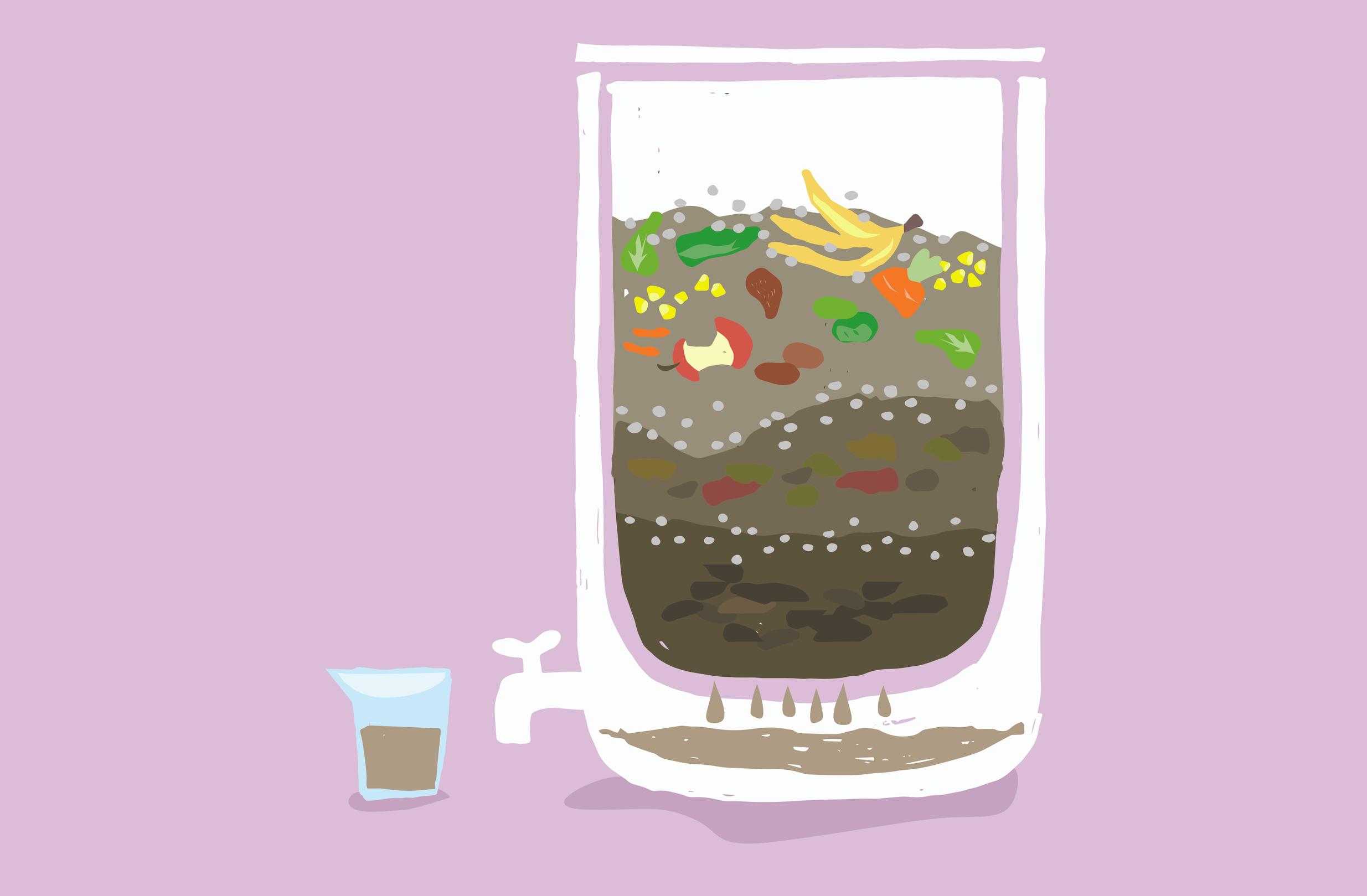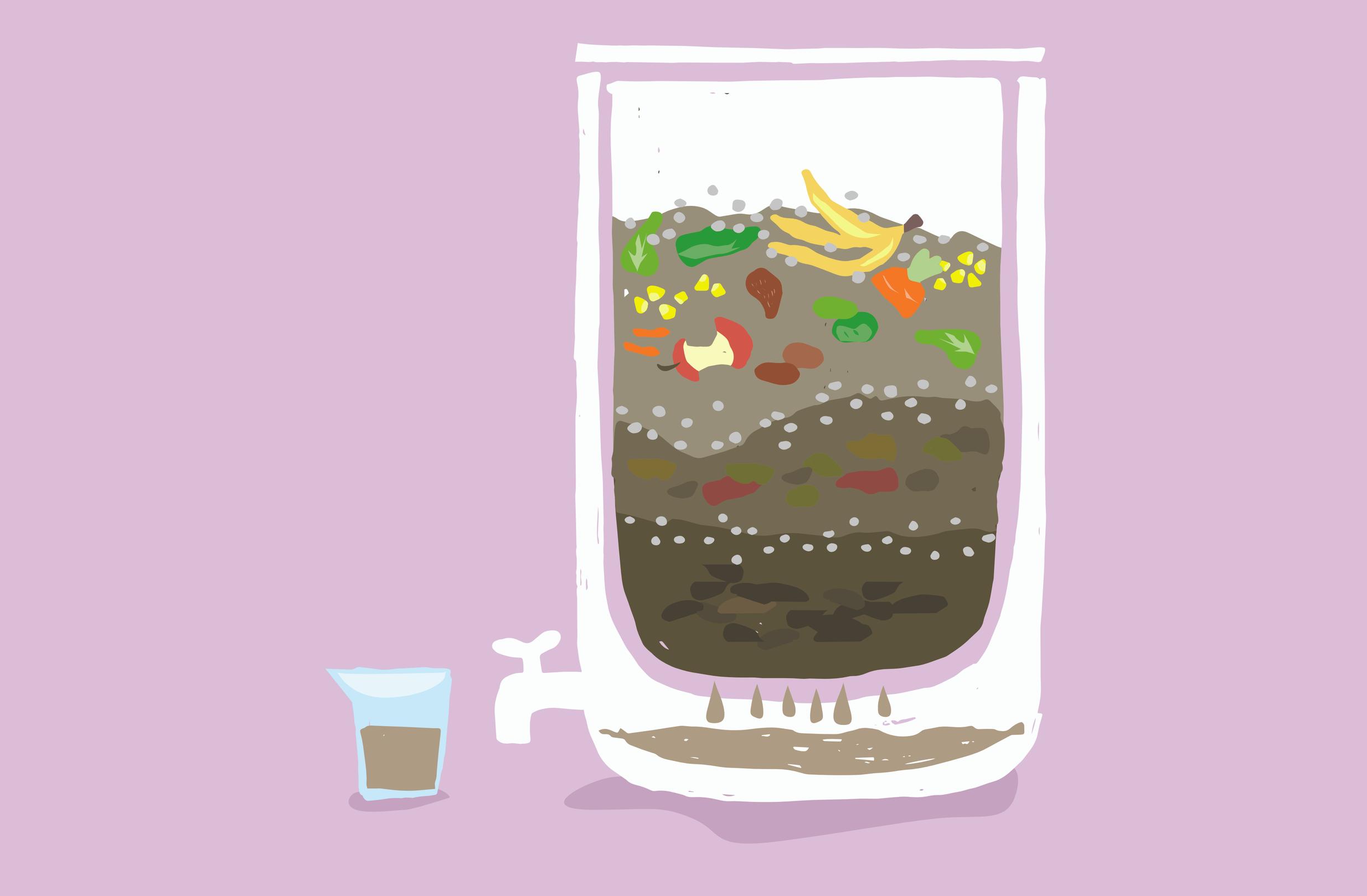
Bokashi composting in your home kitchen—what’s it all about? A handy guide for the curious
Turn your food scraps into soil and fertilizer for your plants with bokashi composting. During the process, food waste ferments with the help of microorganisms. We wrote down the basics of bokashi in this article—this is everything you need to know to get started!
Bokashi refers to fermenting organic material in an oxygen-free environment with specific microorganisms. This composting method originates from Japan, where bokashi means fermented organic matter.
You will need an airtight container—buy a ready-made one or make it from buckets
You will need a bokashi container with a spigot and a lid for fermentation. You can buy one ready-made or make your own from two airtight buckets stacked inside each other. Drill a hole in the inner bucket so the nutrient-rich leachate can drain into the bottom of the other container.
The trick is the EM microorganisms
Bokashi composting relies on EM microorganisms (effective microorganisms), which help ferment food waste. These microbes include lactic acid bacteria, yeasts, and photosynthetic bacteria.
Mix the bran or buy it ready-made
You can make bokashi bran containing EM microorganisms by mixing bran, molasses, and EM stock solution, or buy it ready-made. Avoid storing the bokashi bran or container in overly warm conditions, as temperatures above 40 degrees Celsius will destroy the microorganisms.
Waste breaks down into nutrients
EM microorganisms bind the carbon, phosphorus, and nitrogen in food waste into the soil, helping reduce greenhouse gas emissions. Thanks to these microbes, nutrients are broken down into forms plants can readily use.
Bokashi composting: What can and cannot be added to bokashi?
+ Normal biowaste, such as vegetables, fruits and their peels, wilted flowers, eggshells, coffee grounds, tea bags, and leftover food. You can include only small amounts of meat and fish.
– Liquids, such as vinegar, oil, or juice. Large bones or significant amounts of meat, fish, or dairy products. Ash, paper, and pet waste are also unsuitable for bokashi.

How to make bokashi soil
1. Add waste and bran
Chop food waste into small pieces and press it tightly into the container, as bokashi takes place in oxygen-free conditions. Sprinkle a layer of bokashi bran on top according to the instructions. Keep the container at room temperature so that lactic acid bacteria can ferment the food waste.
2. Drain the leachate
Yeasts soften and dry out the material, causing leachate to collect at the bottom of the container. Drain this acidic and potent liquid from the spigot about every four days. When diluted with water at a ratio of 1:200, it can be used as fertilizer for any plant during the growing season. The waste composition affects the nutrient levels in the leachate. It often contains high amounts of potassium and phosphorus.
3. Mix into soil
Let the filled container sit in a warm place for 2–4 weeks. Once the food scraps have darkened in color, mix them with soil in a separate container or box, often called a soil factory. If you want to use bokashi soil as a soil conditioner, add at least as much soil as there is fermented food waste. For planting, a mixture containing one-third bokashi is ideal.
4. Store indoors or outdoors
The soil factory can be kept indoors or outside, protected from rodents and rain. If the temperature stays above freezing, bokashi soil will be ready to use in just a couple of weeks.


